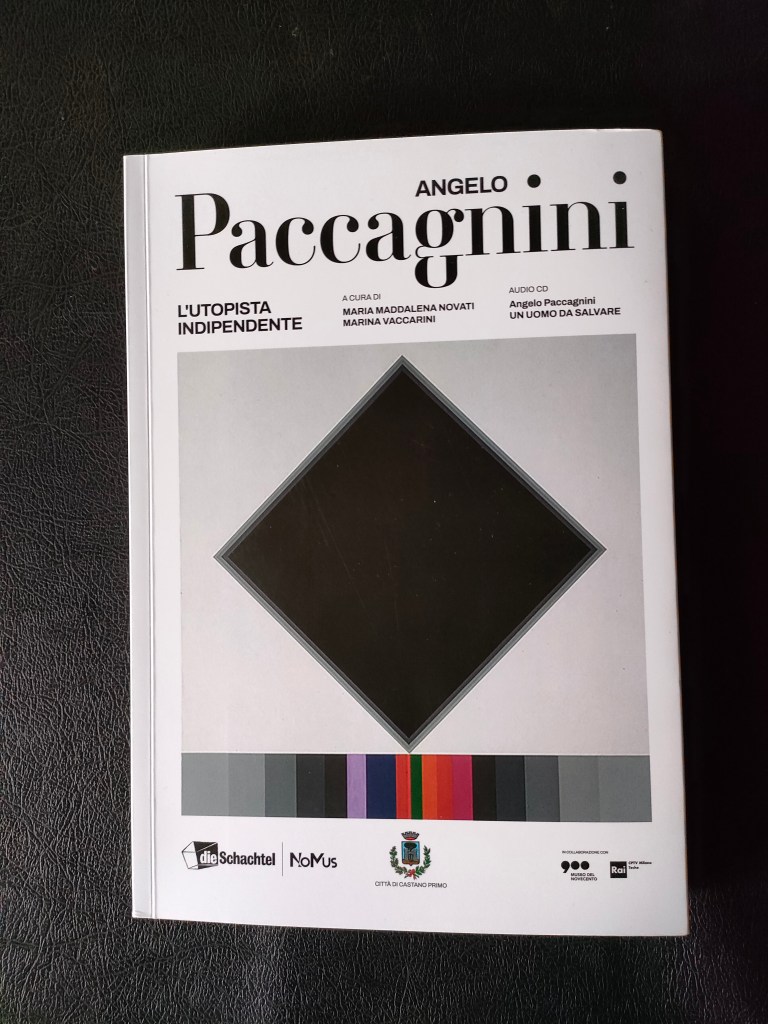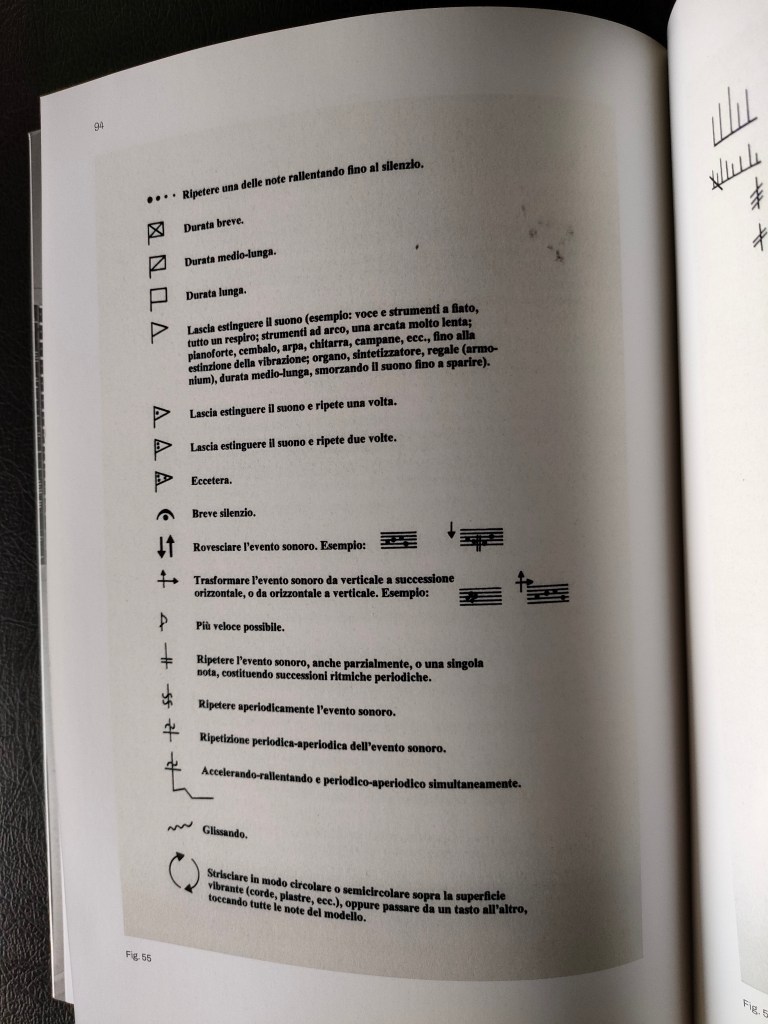My chapter “Angelo Paccagnini and Eugenio Carmi. In hoc signo vinces” has just been published in the book Angelo Paccagnini. L’utopista indipendente, edited by Maria Maddalena Novati and Marina Vaccarini, published by DieSchachtel records and NoMus, produced by the extraordinary Bruno Stucchi and Fabio Carboni, and with an attached CD with music by Paccagnini.
Among the protagonists of the RAI Phonology Studio in Milan, Angelo Paccagnini is perhaps less known than the legendary Berio, Maderna, Nono, Cage, Pousseur. But Paccagnini directed the Studio from 1968 to 1970, he was very active as a composer and won several prizes (e.g. the Premio Italia with the 1964 radio drama Il dio di oro), and an indefatigable musicologist, teacher (he founded the course electronic music at the Milan Conservatory) and promoter of one of the very first early music ensembles in Italy, Ars Antiqua.
My chapter reconstructs a collaboration between Paccagnini and the artist Eugenio Carmi, one of the protagonists of Abstract Art and research on Graphics in Italy. I had already written several times about Paccagnini (e.g. the voice for Treccani Encyclopedia), but this collaboration was unique, a graphic work (by Carmi) and a musical composition (by Paccagnini) for all sorts of voices and instruments made in 1976.
In the score-catalogue each page contained on the left the black and white chalcographic images of works from the X-XV century. with “encrustations” by Carmi, on the right Paccagnini who uses the incipits of musical manuscripts of medieval laude and own Alea scores!
There is no historical trace of records or performances of this “operation”, only this catalog remains. The “Synthetic index of instruments, of all dimensions” is incredible: it is a summation of ancient music instruments, electronic music (“all instruments can be amplified and elaborated electronically”), everyday objects (boilers, pans, dishwashers, vacuum cleaners, washing machines, teleprinters, linotypes, typewriters…), soundscapes (birds, waterfalls), human sounds not made on traditional instruments (claps, buzz). I sincerely hope that one day this score will finally be performed.
The volume also contains the transcripts of two study days dedicated to Paccagnini held between 2017 and 2019.





Leave a comment